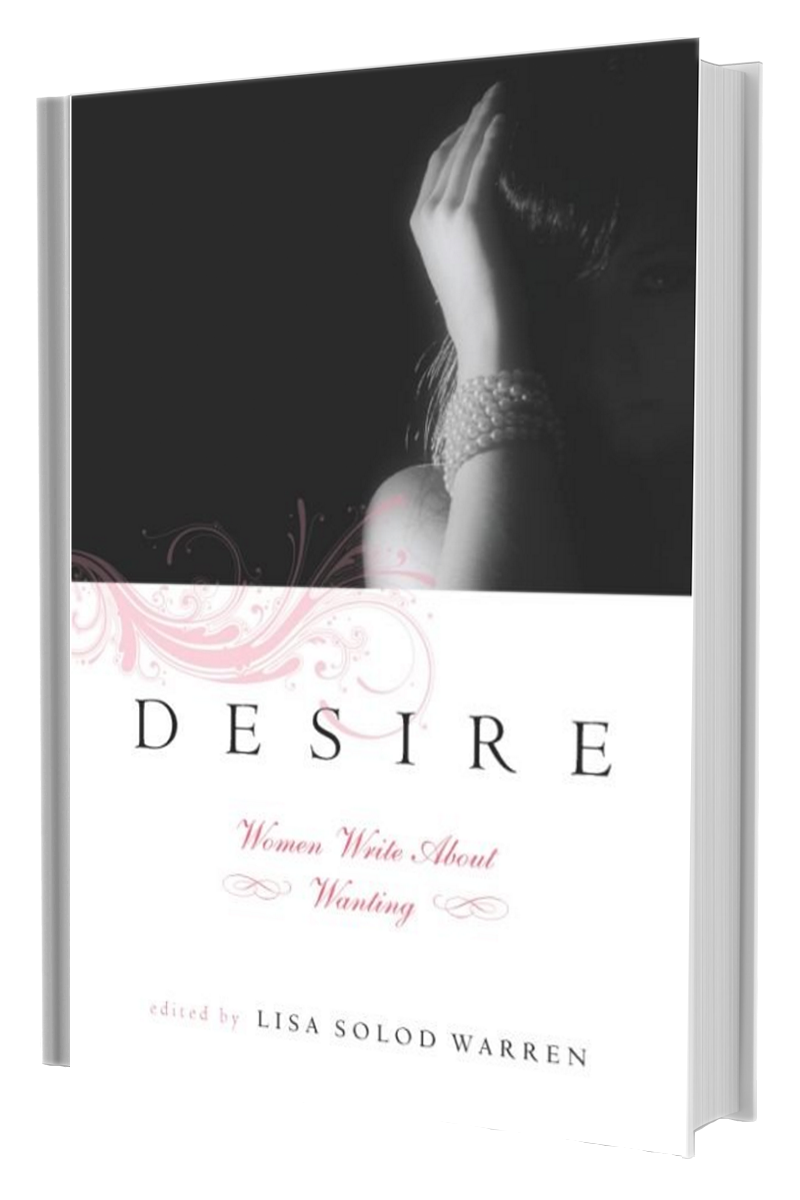DESIRE: Women Write About Wanting
CONCEIVED, EDITED AND WITH ESSAYS BY LISA SOLOD
A captivating collection of essays, Desire delves headfirst into its subject matter and explores the complexity of desire with essays about the things women want, crave, lust after, and covet. An extraordinary group of writers tackle difficult and taboo subjects, from Debra Magpie Earling’s desire to hurt someone, to New York Times writer S. S. Fair’s less than diminishing sensual and sexual desire, despite her increasing age, to Julia Serano’s strong emotional impulse to be a woman before she decided to transition from male to female.
Many of these essayists examine the feelings and experiences which surround the things they want but can’t—or shouldn’t—have. The reasons such desires are taboo are often personal and range from social conventions and religious teachings to more concrete laws and rules. Desire makes the private public and illuminates the rich and varied desires women have.
BUY THE BOOK

From Publisher’s Weekly:
“Solod has collected an enjoyable and thought-provoking variety of essays.”
From Library Journal
This collection of 23 new essays maps a lot of terrain, not simply that of physical desire or lust. The longings here range from joyous to bittersweet, from abstract and philosophical to practical and gritty. In “Death and the Desire to Live Deliberately,” Maggie Bucholt describes how her friend, diagnosed with stage-four colon cancer, takes charge of her life by aiming to live and not waiting to die: she assists hospice patients until she is too sick to volunteer and requires hospice care herself. In “Still Horny After All These Years,” S.S. Fair drives home her point that sexual desire does not fade with age. “Desire has its own circulatory system,” she states, and “as long as you’re upright and breathing, you’re riding its eternally recurring loop of lust and satiation.” Julia Serrano, who was born male and desired more than anything else to be a girl, writes of her loneliness and turmoil in “At Odds.” These writers cut across age and cultural and religious lines. Some use graphic language but not in an exploitative manner. This moving and eye-opening collection is recommended for medium to large public and academic libraries.
—Lisa Nussbaum, formerly with Dauphin Cty. Lib. Syst., Harrisburg, PA